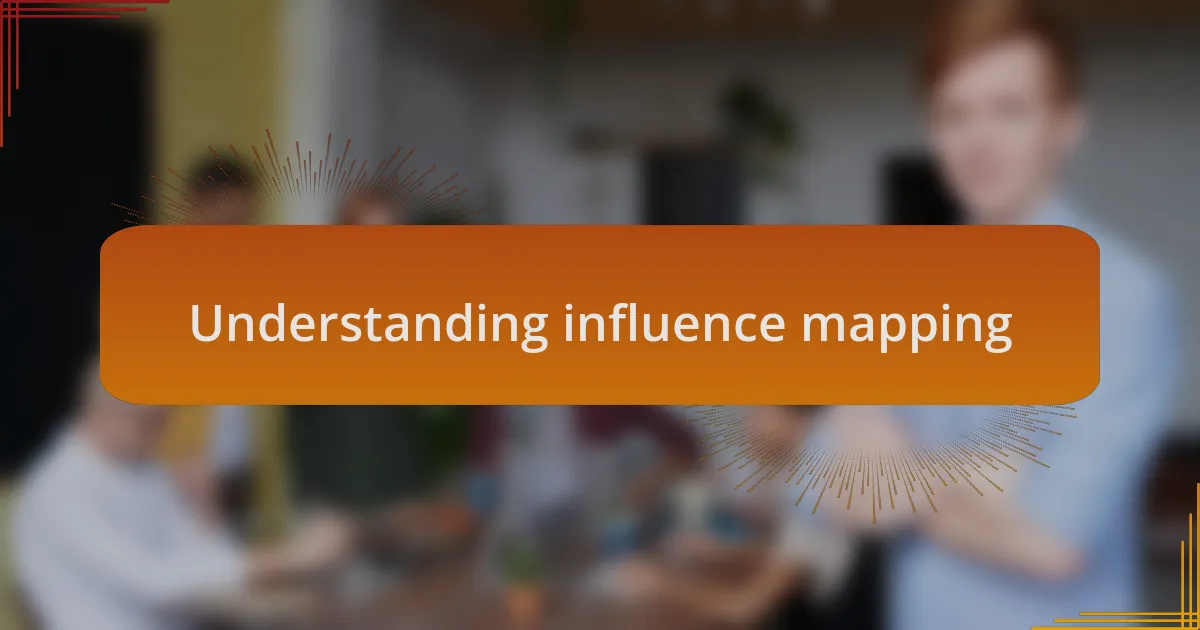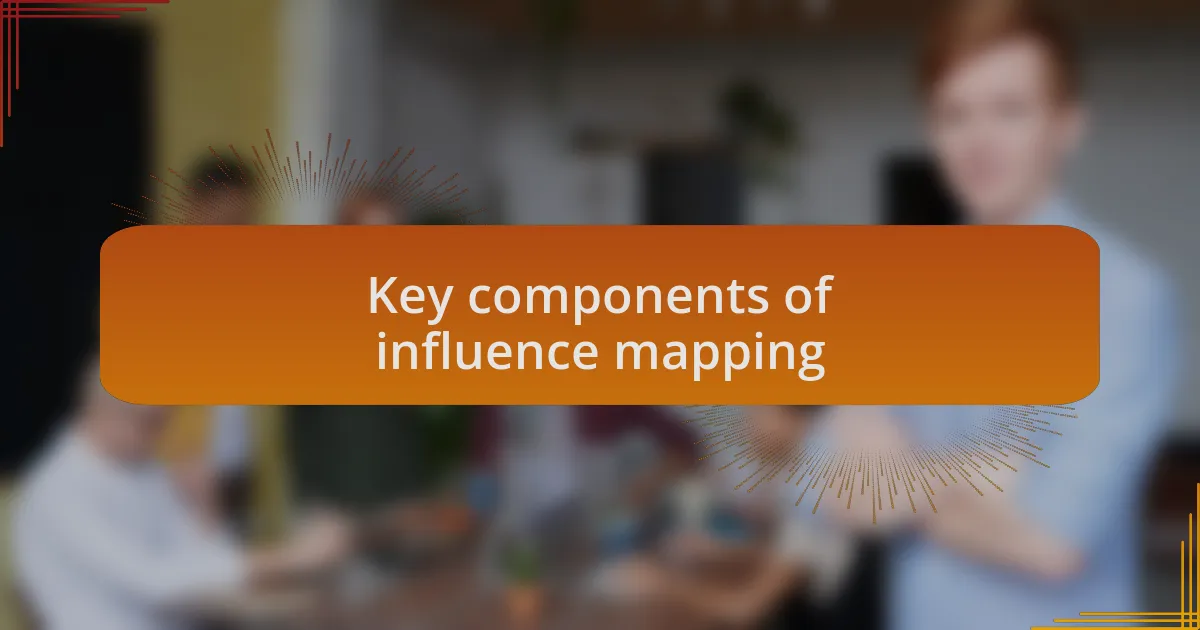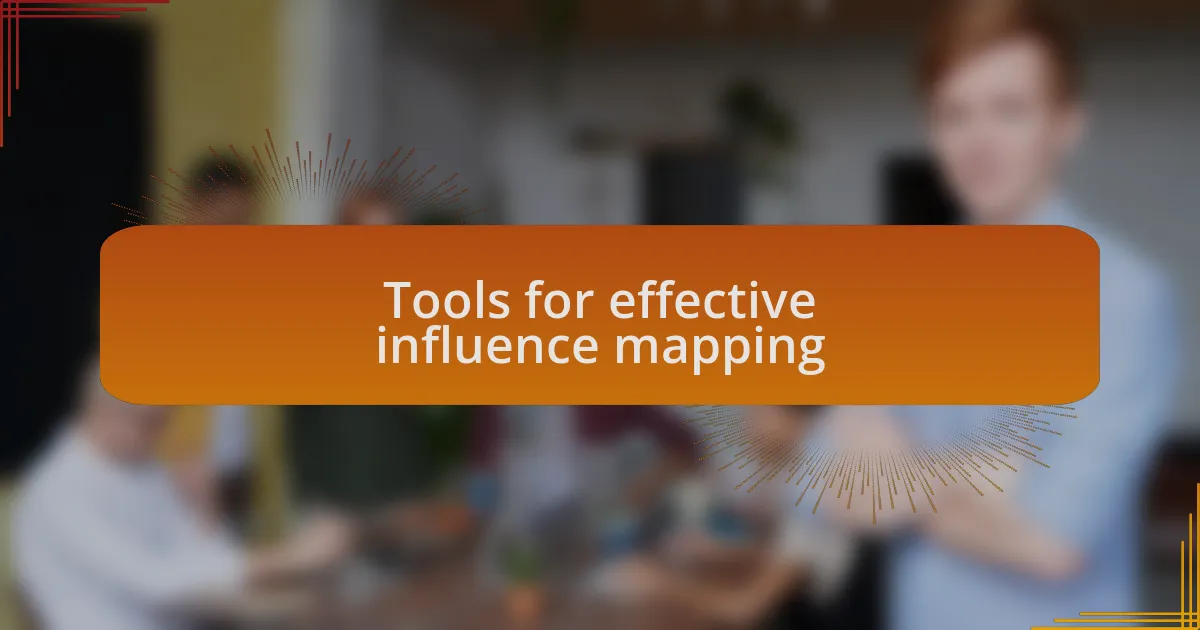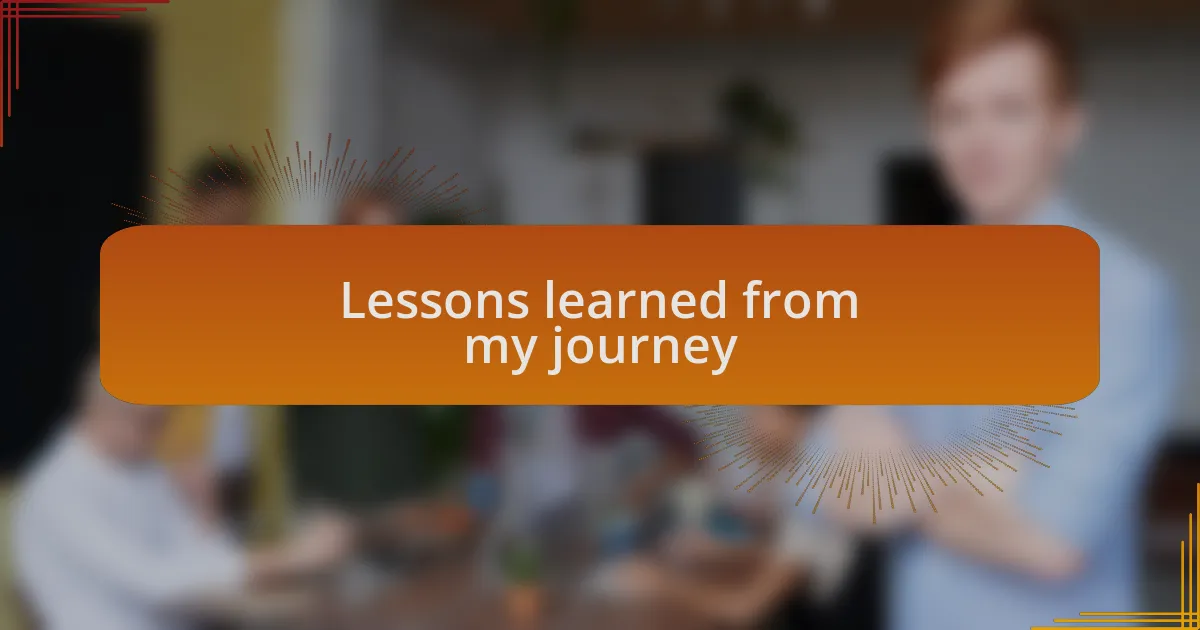Key takeaways:
- Influence mapping helps visualize relationships among stakeholders, revealing potential alliances and overlooked influences.
- Identifying key stakeholders, including less visible influencers, is crucial for amplifying collective impact.
- Utilizing tools like Miro, Stakeholder Analysis Matrix, and social media analytics enhances the influence mapping process.
- Active listening and adaptability are essential for successful engagement and collaboration within community projects.

Understanding influence mapping
Influence mapping is a powerful tool that allows us to visualize and understand the relationships between various stakeholders in a social innovation ecosystem. I remember the first time I used an influence map for a community project; it was eye-opening to see who held the most sway and how interconnected everyone was. It made me wonder—who might be the missing piece in this puzzle?
At its core, influence mapping isn’t just about charts and graphs; it’s about understanding dynamics that drive change. I once facilitated a workshop where participants mapped out their influences. The emotions in the room were palpable as they recognized their own power and potential to impact their community. It makes me think: how often do we overlook our own roles in these networks?
The approach encourages us to identify key players, engage in meaningful dialogue, and ultimately strategize our actions. It’s fascinating to see how shifting one influence can create a ripple effect. Have you ever thought about how your connections could transform not just your project, but the lives of those around you? That realization can be incredibly empowering.

Key components of influence mapping
One of the essential components of influence mapping is the identification of key stakeholders. During my previous experience with a local initiative, I realized how critical it was to pinpoint not just the leaders, but also the influencers who might not be in the limelight. Who would have thought that a high school student advocating for eco-friendly practices could sway local businesses? Recognizing diverse voices can open doors to unexpected alliances.
Another crucial aspect is understanding the nature of relationships among these stakeholders. Reflecting on my journey, there was a moment when I discovered a shared connection between two seemingly unrelated community groups. This revelation led to a collaboration that amplified our impact significantly. Have you ever experienced a moment where connecting the dots not only clarified relationships but also ignited new possibilities? It’s an enlightening process when you see how intertwined our efforts can be.
Lastly, assessing the potential influence each stakeholder has is vital. I once mapped a network for a community health project and discovered that a single community elder held respect across various demographics. It was impressive to see how strategically engaging with him could enhance interventions in the neighborhood. How many times have we underestimated the impact someone could make just because they’re not the loudest voice in the room? Understanding these dynamics can truly shift the course of our initiatives.

Tools for effective influence mapping
When it comes to tools for effective influence mapping, online platforms like Miro and Lucidchart have become invaluable for visualizing stakeholder relationships. In one project, I used Miro to create a dynamic map that allowed my team to collaboratively add insights in real-time. The experience was eye-opening; seeing our thoughts come together visually made me appreciate how technology can foster deeper understanding and communication.
Another effective tool I’ve found is the Stakeholder Analysis Matrix. It’s a simple yet powerful way to categorize stakeholders by their influence and interest levels. In my work with a social enterprise, this framework helped us prioritize our engagement efforts. We identified a key influencer who felt sidelined and, simply by tuning into their concerns, we transformed a potential point of friction into a powerful partnership. Have you experienced a breakthrough moment simply by reevaluating how you perceive your stakeholders?
Finally, leveraging social media analytics tools, like Hootsuite or Sprout Social, can uncover the hidden influences within your community. During a campaign, I noticed how a local influencer’s posts resonated with our target audience, driving unexpected engagement. It made me think—how often do we overlook digital footprints that can guide us in crafting our messages? These tools not only enhance our influence mapping process but can redefine our approach to audience engagement.

Lessons learned from my journey
Reflecting on my journey through influence mapping, I learned the immense value of active listening. In one instance, during a community meeting, I felt the transformative power of simply hearing what stakeholders had to say. Their voices highlighted concerns I’d never considered, reshaping my entire approach. Have you ever had an experience where just listening changed everything?
Another significant lesson was the importance of adaptability. Early on, I had a structured plan in mind, but I quickly realized that stakeholder dynamics can be unpredictable. In a project with diverse community groups, I found that being flexible and open to change led to unexpected collaborations. It’s fascinating how letting go of strict agendas can open doors to new opportunities.
Engagement isn’t just about gathering data; it’s about building relationships. I’ve seen firsthand how sharing personal stories can create a deeper connection with stakeholders. When I shared my own journey and challenges, the conversations became more meaningful, fostering trust and collaboration. How do you connect with your audience on a personal level?